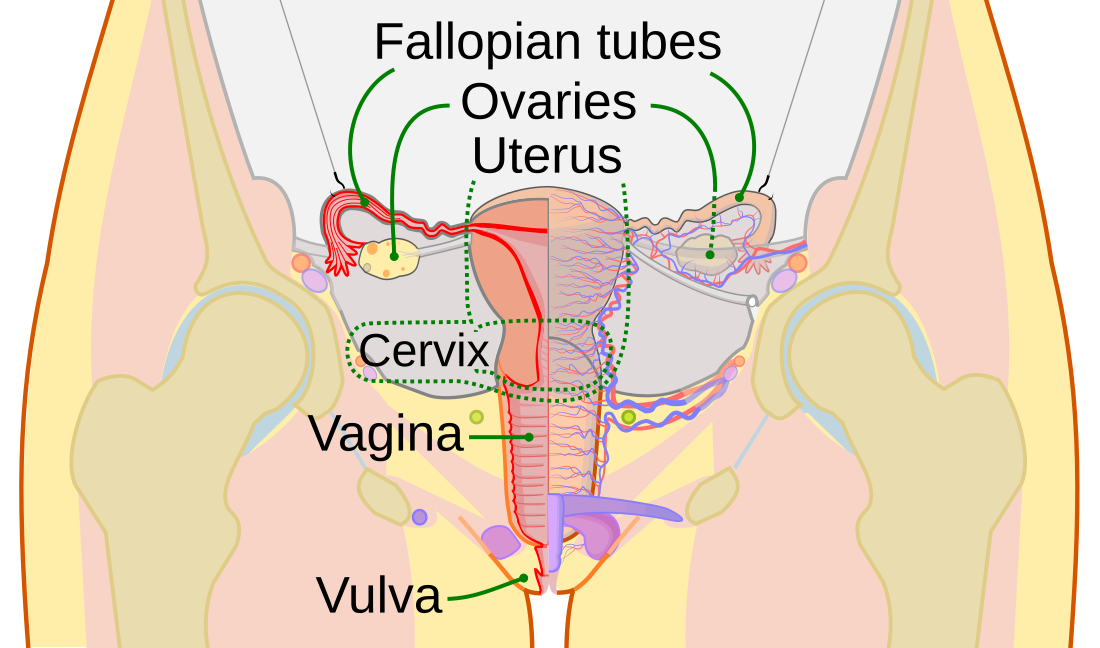Fallopian tube
part of the female reproductive organs From Wikipedia, the free encyclopedia
Remove ads
The fallopian tubes (also known as oviducts and uterine tubes) connect the ovaries to the uterus. The fallopian tubes let the ovum pass into the uterus. The ovum is able to be fertilized by sperm during sexual intercourse.[1]
Remove ads
Origin
They are named after the 16th century Italian anatomist, Gabriele Falloppio. The Greek word salpinx (σαλπιγξ) means "trumpet".
Anatomy
There are two Fallopian tubes attached to either side of the end of the uterus. Each tube will end near one ovary. This place is called the fimbria. The Fallopian tubes are not attached to the ovaries, but open into the peritoneal cavity. The inside of tubes is lined with epithelial cells with cilia. The cilia help the ovum travel through the fallopian tubes and into the uterus.[2]
In humans, the Fallopian tubes are about 7 - 14 cm long.
Parts
There are four parts of the fallopian tube from the ovary to the uterus:[3]
- Infundibulum
- Ampulla - where the ovum is fertilized
- Isthmus
Layers

The fallopian tube is made of three layers:[4]
Movement
The Fallopian tubes can move around the pelvis.
Remove ads
Fertilization
When an ovum is ready to be released from the ovary, the ovary wall breaks open and the ovum goes into the fallopian tube. There, it starts moving towards to uterus with the help of liquids and cilia on the inside walls. This can take hours or days.
If the ovum is fertilized while in the fallopian tube, then it sticks to the endometrium, which is the beginning of pregnancy.
Related pages
- Menstrual cycle
- Ovum on wiktionary
References
Wikiwand - on
Seamless Wikipedia browsing. On steroids.
Remove ads


